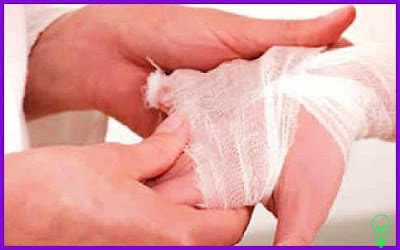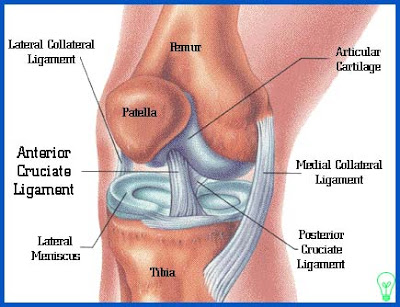This question may seem obvious, but have we ever asked ourselves what do we define as "being healthy"? I've just finished my MSc degree in Biochemistry and now have started my medical (MBChB) degree. We've recently had a series of lectures on this very topic. A few days ago our lecturer posed the question:
WHAT IS HEALTH?
The answers that came out were:
1) A sense of wellbeing
2) Absence of disease and illness
Are the two the same thing or are they different? As pointed out by our lecturer, "wellbeing" indicates a state that must be attained, so although we may not have any illness, we still may not be "well". Definitions of health vary depending on a number of factors, especially socio-economic ones. Impoverished people may define health on a more "functional" level, whereas more affluent people look beyond being functional and look toward "optimal" and physical fitness as being "healthy".
I think the 2 answers really highlight the road of medicine. Already, in 3 weeks of being at medical school I can see how our thinking can be changed and drawn toward certain notions. The majority of work as a junior doctor, especially during the intern years will be treating people who are already sick, those who already have disease, those who have come to hospital to be healed. They are already unhealthy.
Much of a doctor's career will be spent making people better, ridding them of illness.
However, this is not why I got into medicine. I do not want to only focus on making sick people better, I want to focus on preventing healthy people getting sick. We do not want people to get to the point where they land up in hospital, on an operating table, having a triple bypass. People who get sick cost the government billions each year - the drugs and medication needed, the rehabilitation needed, time off work, ultimately resulting in fewer work force for the country. We need to stop people getting to this place. We need to keep people healthy, functional, and able to work to create a stronger economy.
I got into medicine to help people attain the "ideal" - optimal health. However, as discussed in our lecture, the "ideal" is not a state of reality, sadly. BUT we have to work towards this, it is the only option.
Treating the symptom (heart attack) without treating the cause (bad lifestyle) is not going to fix the problem. It's going to mask it, put a plaster on it, and give people a fake sense of hope that everything will now be OK.
WHAT IS THE SOLUTION?
We need to educate people. Plain and simple as that. It needs to be aggressive, proactive, extensive and easily accessible. It needs to be community orientated, goal-driven, cheap and motivational.
So where can we start? Let's start at looking at: What is healthy?
Is this healthy?
I don't doubt, 100% of you will say NO.
What about this? Is this healthy?
Again, 100% of you will say NO.
And this?
The first picture, everyone would most likely agree, this model is severely anorexic. What about the next? Very thin, but some would consider this look attractive and desirable. Modern day pressures to look a certain way have escalated and in our obsession to "fit the ideal", have we destroyed our concept of "ideal health" and what it should look like?
Is this healthy?
With an incredible amount of media focussing on physical appearance, diets, exercises to burn calories, tone tummys, melt fat, lift saggy areas in magazines, newspapers and tv shows, it's no wonder our primary concept of "health" revolves around "physical health".
What health really is, is shown below:
Physical health plays only 1/6 of the picture (16.67%!) yet we seem to place >90% of our image of "health" in this one small area. Let's be real for a second: it's probably because it's the area we know most about how to become healthier. But is it enough?
Can we transform our bodies and be healthy? Is that enough? Why did we become unhealthy in the first place be it over- or under-weight. Where does the real problem lie? Because let me tell you, junk food and being lazy are not the answers.
The REAL answer to all forms lies in SELF ESTEEM.
I am by no means an expert in this field, but it is our duty to try and make a difference to help others help themselves, right? So, this is what I can share with you (based on what we have studied at medical school).
In my opinion, like all things in life, improvement only comes from practice. But how do you practice your self esteem? Has anyone ever thought of this before? Have YOU thought about how you can practice improving your self esteem?
A very interesting book that I read by clinical psychiatrist Dr Robin Skynner (co-authored by John Cleese) called Life: And how to survive it, explains that there are in fact very few mentally very healthy people in the world. The degree to which, they described as "how many Olympic gold medalists do you know?" Well, exactly. Mentally/Psychologically very healthy people can be placed on par with the number of Olympic gold medalists: very very rare, with few and far between! Like Olympic athletes, a LOT of training must go in to achieving such a title. Sadly, I feel we neglect training our emotional minds - either from lack of awareness of its importance, lack of knowing how, or just lack of capacity to tackle it on one's own.
The BIG million dollar question is for today: HOW DO YOU IMPROVE SELF ESTEEM? There is a lot of mumbo jumbo out there about "accepting yourself" and so on and on, BUT HOW?! How do you do this? Hundreds and thousands of obese and overweight people who suffer from extremely poor self worth end up dying from physical ailments such as heart attacks, although the root cause may have been psychological.
I vividly remember one anorexic on the Oprah show crying in desperation for help because she did not know HOW to accept herself. She eventually died.
Here is HOW according to our medical notes:
First and foremost, low self-esteem needs to be addressed. You have to work on it because your performance in life (work-wise, relationship-wise, happiness-wise, everything life-wise) is followed proportionally to your self-esteem.
"If you believe you can do something, or if you believe you can't, you are right in both cases." - Henry Ford
Knowing yourself is a prerequisite for good self-esteem.
You have to discover your values, what you believe in and what you live by. The closer your values are to your actions, the happier you will be.
"You become which you think about most."
So, step number one, establish some values.
What do you value? Write some down. Loyalty? Honesty? Integrity? Ambition?
Knowing yourself increases your self-awareness and so the more intune you become to your attitudes and behaviour, weaknesses and strengths, thoughts and prejudices as well as your potential and future self.
Next, ask yourself, how much do you believe in yourself? 100%? 75%?
And what would happen if you believed in yourself that 25% more? And why not? It's free!
Ways in which self esteem are built and destroyed
This is important to be aware of, because you need to be able to identify when you are doing which:
Building self esteem comes when:
You find a GOOD role model
You give praise and compliments (to yourself and others)
You focus on the positive
You keep criticism to a minimum (of yourself and others)
You set goals and achieve goals.
Destroying self-esteem happens when:
You compare yourself to others.
You put yourself and others down
Drug abuse
Finally, what I would like to end off with is:
TIPS FOR BUILDING GOOD SELF ESTEEM
Identify with people that build your self esteem
Build others - give sincere compliments often
Think positively
Set and achieve goals
Do something challenging every day
Look your best
Eat correctly
Do something for someone else
Learn a new skill
"Act as if" you possess traits you would like to have e.g. confidence
Handle things one at a time
Use criticism constructively
Ask for help - take advantage of learning experiences
Improve your personal living space (clean up, declutter etc)
Allow patience and personal growth time
Post self improvement messages or reminders in obvious places
Do not say negative things about yourself
Reward yourself
List your accomplishments each evening
Volunteer to share your skills with others
Find me on Facebook on Nutrition Through Science or Fitnessfacts100














